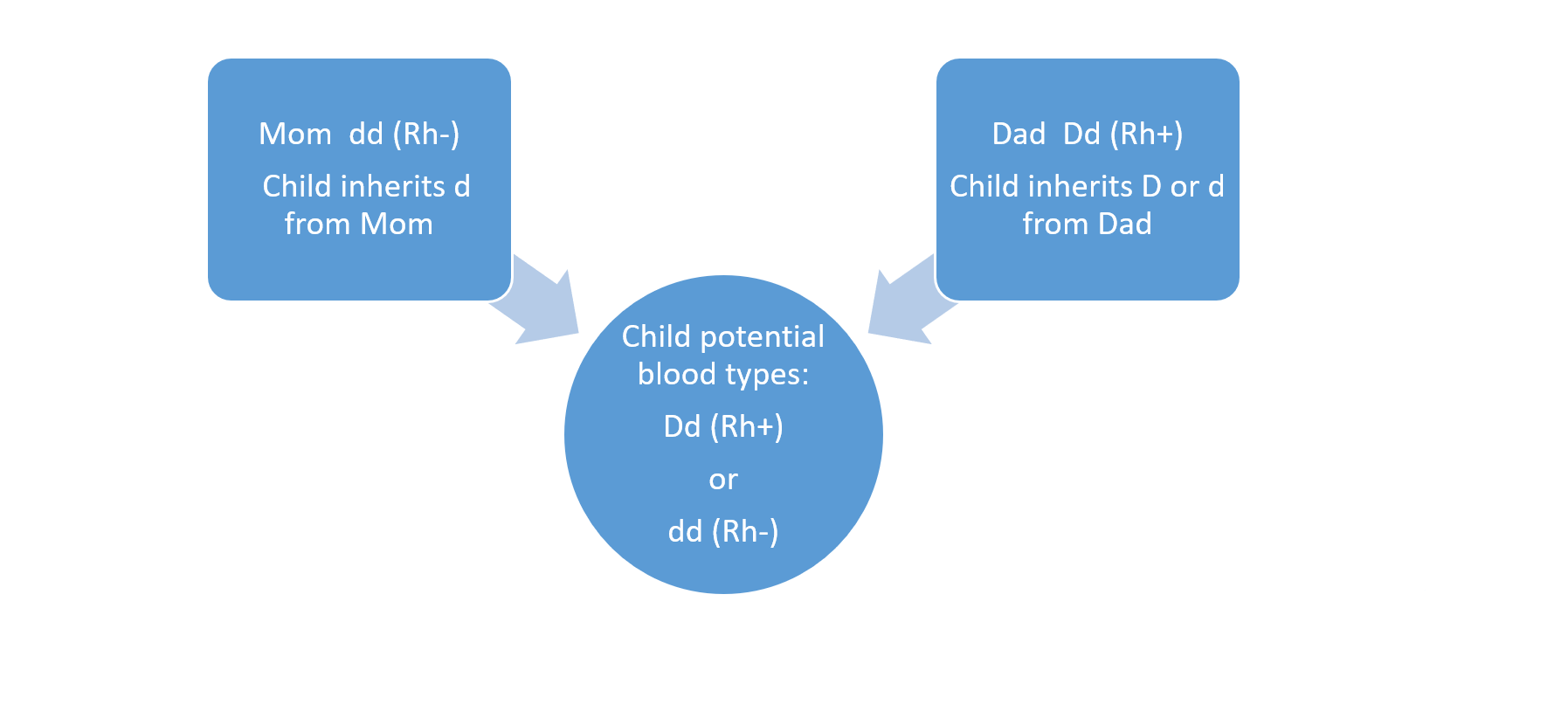Blood Type Inheritance
A person’s blood type is inherited, meaning their blood type is determined based on the 2 genes (aka corresponding alleles) that they receive from each of their parents. The inherited alleles, or variants of the same gene, from each parent combine to produce a person’s genotype.
Let’s explain this in terms of an individual’s ABO blood type:
The ABO gene is made up of a combination of the 3 following inherited alleles: A, B or O. As each person inherits one of these alleles from each of their parents, they will have a combination of 2 of these alleles. Since each of their parents also have 2 alleles (which are either A, B or O), then half of their ABO blood genotype will come from one parent and the other half will come from the other parent.
ABO blood type inheritance example
Note: The presence of “O” gene just indicates the lack of A or B allele, because the expression of “O” simply means the lack of A or B antigen on our red blood cells. Therefore, the genotypes AA or AO will both be expressed as blood type A. Similarly, the genotypes of BB or BO will both be expressed as blood type B. Only the OO genotype will actually be blood type “O” as these individuals have no expression of either A or B antigens.
It is also important to note that ABO blood type is inherited co-dominantly, meaning both A and B antigens are expressed on the red blood cell, if they are both present in the genotype.
What about Rh inheritance?
The (+) or (-) of an individual’s blood type refers to the presence or absence of the Rh, or D, protein on their red blood cells. Sometimes, the Rh status of a person is referred to as D or d, with the capital “D” being the presence of the protein, and the lowercase “d” being the absence of the protein. If a person has at least one D allele, then they will express the D protein on their red blood cells. Only those individuals who have both d alleles will be Rh (-), and have no D protein expression.
Rh inheritance example
Furthermore, parents who are both Rh+ can potentially have an Rh- child if both of their genotypes are Dd and their child inherits both d alleles, making the child dd (Rh-).
References:
AABB Technical Manual, 19th ed. 2017. Edited by Fung M, Eder AF, Spitalnik SL and Westhoff CM.



